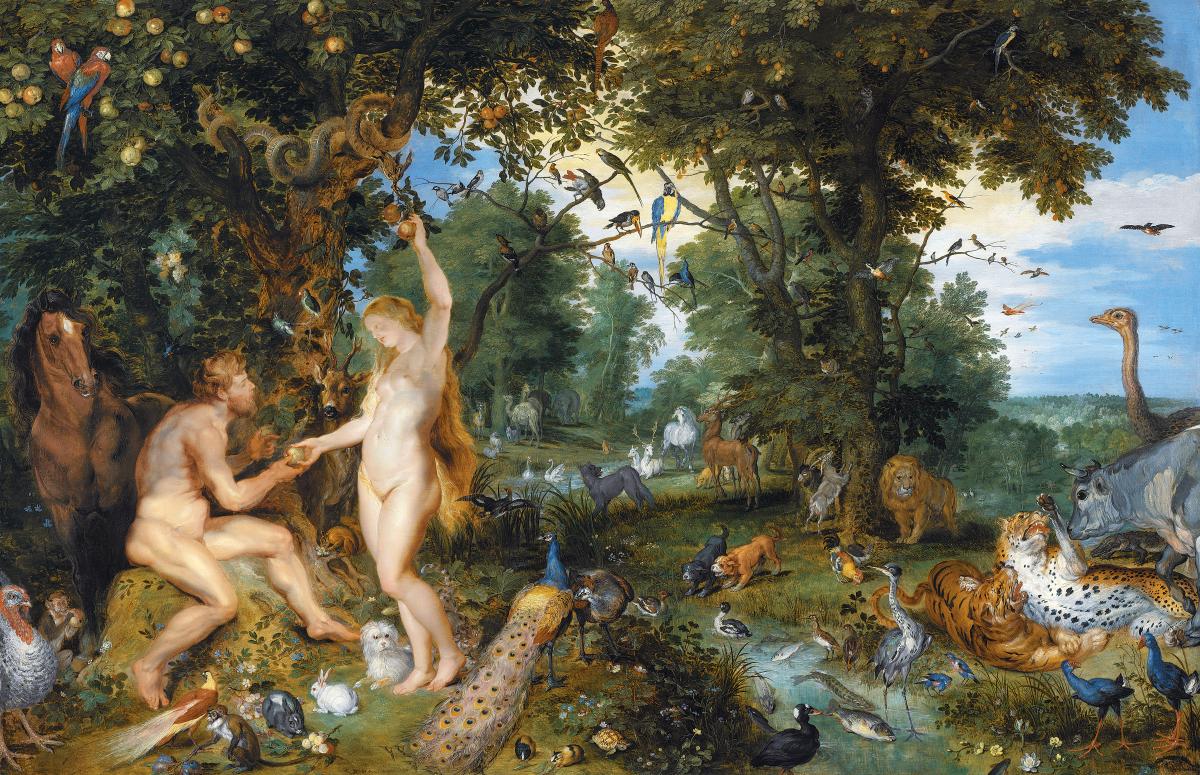This wonderful Cornish workshop and museum is dedicated to the legacy of studio pottery trailblazer Bernard Leach
Bite-sized art – 5 things to know about a Mauritshuis masterpiece
Bite-sized art – 5 things to know about a Mauritshuis masterpiece
14 Oct 2022
We asked experts at the Mauritshuis for the details on this spectacular work, The Garden of Eden with the Fall of Man,made by not one, but two Flemish masters
 Credit: Mauritshuis, The Hague
Credit: Mauritshuis, The Hague
Jan Brueghel the Elder and Peter Paul Rubens made several versions of this type of painting, with this one dating to 1615. The two Antwerp artists were contemporaries and friends, and it was not uncommon for them, or other artists, to paint works together. They both signed this painting and created some 20 works together in all. The result of their collaboration here is nothing short of exceptional, bursting with colour and detail.
Here are five things to know about this work…
1. Rubens’ signature (left), ‘PETRI PAVLI RVBENS FIGR’ (‘Peter Paul Rubens painted the figures’), indicates he painted just Adam and Eve. But the writhing serpent, the gnarly tree bark and the mane of his horse all hold his bold, broad strokes. Brueghel’s are finer (see his tortoise’s shell and the tiger’s rich coat). His signature, ‘IBRUEGHEL FEC ’(right), means ‘Jan Brueghel made it complete’.
2. The animals are an artistic tour de force. Peacocks strut, tigers gambol while a lion looks on, and dogs bark at ducks in the water. There are swans, camels, deer and guinea pigs, all surveyed by exotic birds. Brueghel was familiar with many of the species he painted here. When a painter at the court of Archduke Albert and the Infanta Isabella in Brussels, he had access to their menagerie.
3. Symbolic allusions are included in this painting. Spot the monkey crouched behind Adam on the left of the painting, enjoying an apple. Monkeys often featured in 17th-century art, representing sinfulness – the thinking being they might carry some semblance to humans, but lacked the ability to judge what was good or evil. The monkey warns of Adam’s imminent action. People of the time understood such symbolism and what it represented.
4. The painting started life in Brueghel’s studio, for the initial sketched composition, and was then taken to Rubens’, where he began the painting; it was then returned to Brueghel. It showcased each artist’s skills, and wealthy buyers were keen to own a work by two such stellar names. Prince William V bought it at auction in 1766, paying 10 times what he would have done for a work by Anthony van Dyck.
5. Brueghel (who was the second son of the famous Pieter Brueghel the Elder) loved to paint animals and flowers; see the precision with which he has executed these blooms by the side of the stream, and the grasses bending gently in the breeze behind them. His precise studies of nature earned him nicknames, such as ‘Flower Brueghel’and, appropriately for this work, ‘Paradise Brueghel’.
SEE
The painting is on view in Room 2 at the Mauritshuis, The Hague, which this year is marking its 200th anniversary; mauritshuis.nl
JOIN OUR MAILING LIST
Become an instant expert!
Find out more about the arts by becoming a Supporter of The Arts Society.
For just £20 a year you will receive invitations to exclusive member events and courses, special offers and concessions, our regular newsletter and our beautiful arts magazine, full of news, views, events and artist profiles.
FIND YOUR NEAREST SOCIETY
MORE FEATURES
Ever wanted to write a crime novel? As Britain’s annual crime writing festival opens, we uncover some top leads
It’s just 10 days until the Summer Olympic Games open in Paris. To mark the moment, Simon Inglis reveals how art and design play a key part in this, the world’s most spectacular multi-sport competition



